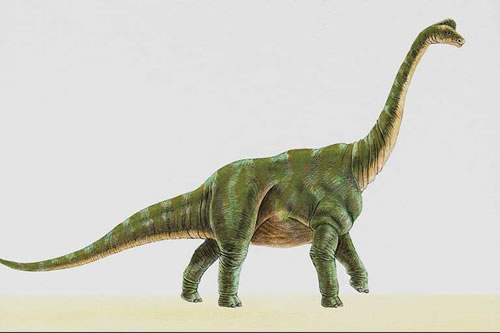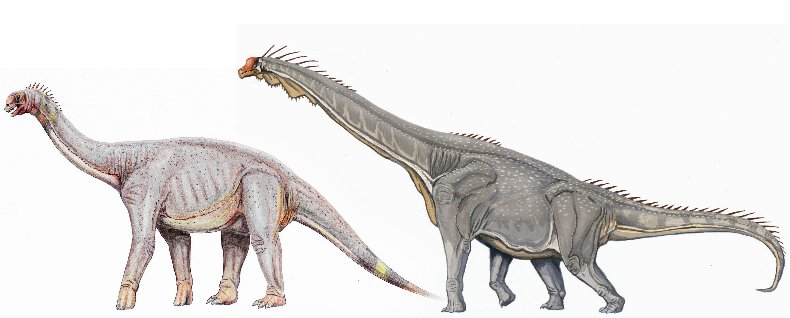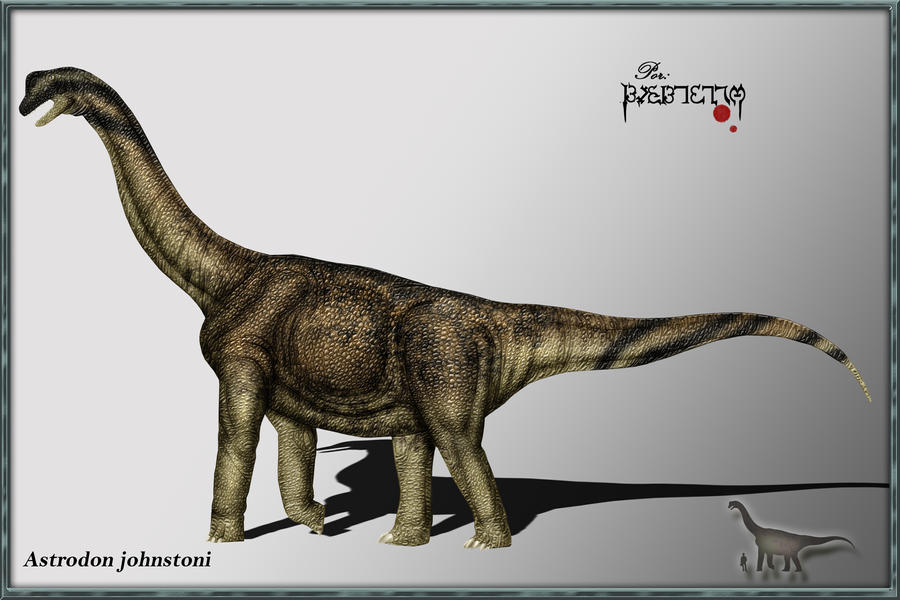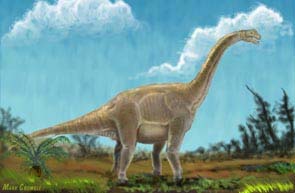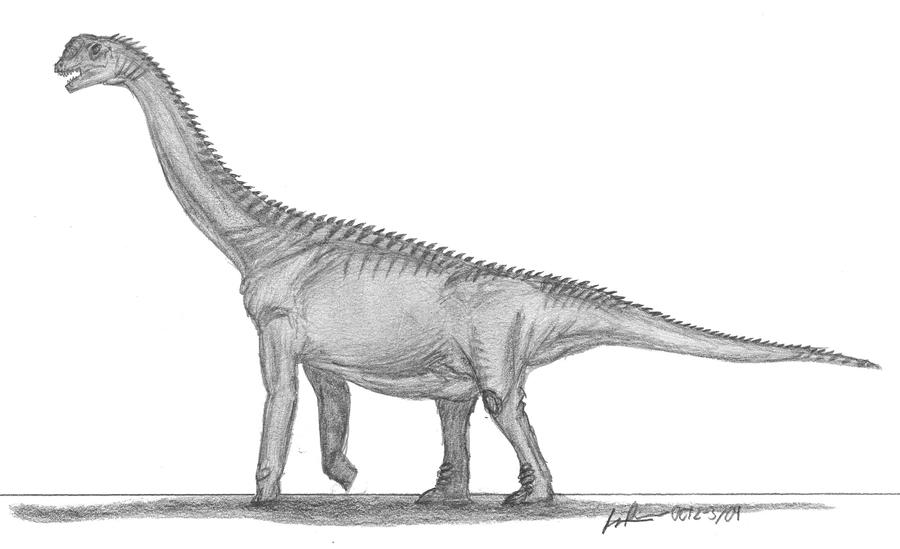Astrodon
Live reconstruction of Astrodon johnstoni.
- Maryland, USA ( Arundel Formation)
- Astrodon johnstoni
Astrodon is a genus of sauropod dinosaur from the group of Titanosauriformes, which was related to Brachiosaurus and lived in the Lower Cretaceous of North America. Like all sauropod Astrodon was a tall, quadrupeder ( four-footed ) herbivore with a long neck and tail. The type Astrodon johnstoni was described as early as 1865 on the basis of teeth that have been in the Arundel Formation ( middle to late Aptian ) in Maryland (USA) found. Additional material of the Arundel Formation was Othniel Charles Marsh of (1888 ) as Pleurocoelus ( Pleurocoelus nanus and Pleurocoelus altus ), although Gilmore ( 1921) suggested that all these finds belong to one species - where the name Astrodon would have priority because he was awarded first. This opinion is shared by Carpenter and Tidwell (2005) support, which published the first comprehensive description of the remains - according to these researchers provides Astrodon johnstoni the only valid name since. Nevertheless, still there is disagreement as to whether or Pleurocoelus Astrodon should be used as the name of the sauropods. In the following description Pleurocoelus is considered as a synonym of Astrodon.
Features
Astrodon is known by a variety often found isolated bones, total cover most part of the skeleton. Most finds come from young animals, which among other things shows that the bones are small, that the bones of the skull ( neurocranium ) were not fused together, and that scars on the bones, resulting from muscle attachments were weak. Diagnostic characters find themselves particularly to the vertebrae; as the cervical vertebrae compared to Brachiosaurus and Sauroposeidon were short and very broad, suggesting a relatively short neck. An important distinguishing feature ( autapomorphy ) are also the unusually large Pleurocoele (lateral cavities ) of the Präsakralwirbel ( the vertebrae before the sacrum, so neck and back vertebrae), as many other representatives of the Titanosauriformes show only weak Pleurocoele. Some authors suggested that Pleurocoele be pronounced because it is mostly these were juveniles at the individuals found - actually are pronounced Pleurocoele a typical feature of juvenile sauropods, as you can watch it eg Camarasaurus. Carptenter and Tidwell (2005 ) noted, however, that the Pleurocoele of juvenile Camarasaurus in relation to the vertebral body were much smaller than that of Astrodon.
Fund history and naming
Christopher Johnston named the genus Astrodon already in 1859 on the basis of tooth and tooth fragment, which were found near Bladensburg in Maryland, but did not provide a species name on. It was only in 1865 as Joseph Leidy the Artepitheth johnstoni in honor Johnston on, and is led by the International Regulations for Zoological Nomenclature ( ICZN ) as the author of the name Astrodon johnstoni. Astrodon is the first named sauropod from North America and the second would be named North American dinosaurs ever been, Johnston had adopted a kind. Johnston chose the name Astrodon, which astron from the Ancient Greek words - "Star" and odon - composed "tooth", since the tooth was found sawn radially.
John Hatcher discovered in the years 1887 and 1888 further Sauropodenmaterial, which then assigned Marsh (1888 ) Two new species Pleurocoelus nanus and Pleurocoelus altus, although teeth found the two species had strong similarities with the Astrodon teeth. Carptenter and Tidwell (2005, see sources) Write this: " As it what common for the time, Marsh did not refer any of his specimens to a taxon added anonymously named, Especially one created by someone else" ( in German about "How to this time none of his usual wrote march finds a previously named taxon to, especially when it was set up by someone else "). Later authors, except for Salgado et al. (1995), suggest that the findings were part of a single sauropod species (eg Hatcher 1903, Lull 1911, Gilmore 1921 or Ostrom 1970). Carpenter and Tidwell (2005), which have re-examined all the material, confirm the relationship of the bone to only one species and see Astrodon johnstoni as the only valid name.
Marsh presented in 1898 on the family Pleurocoelidae which Pleurocoelus should include. However, the said Marsh diagnostic features of this taxon were also found in other sauropods, why can not distinguish the family, and is thus no longer accepted. Finds from Texas were in the past also allocated to the Pleurocoelus ( Langston, 1974; Salgado and Calvo, 1997). Gomani et al. However, (1999) point to differences in the vortex anatomy Pleurocoelus and delimit the Texas sauropod from Pleurocoelus.


